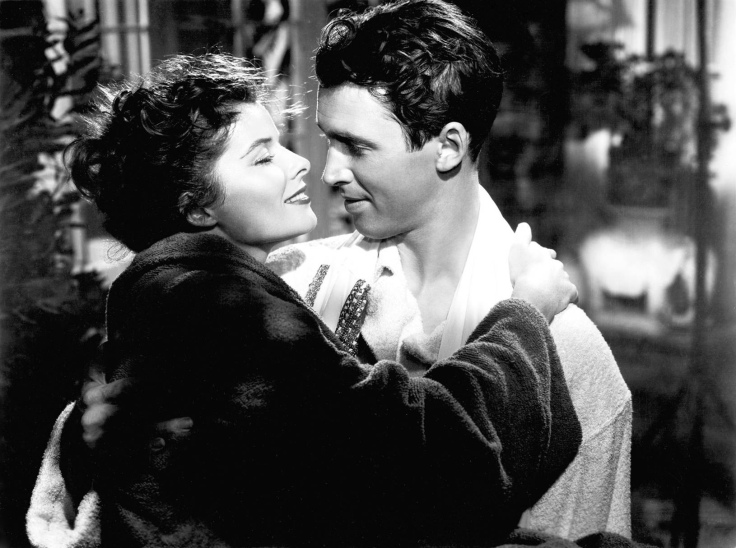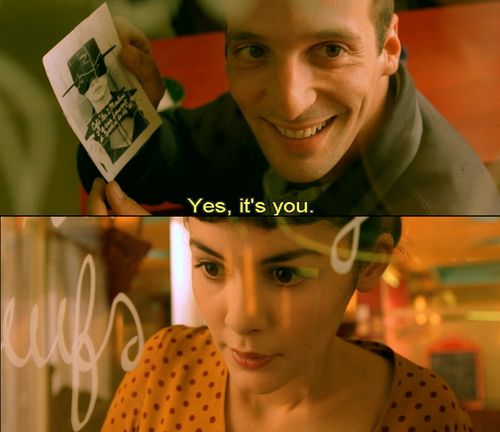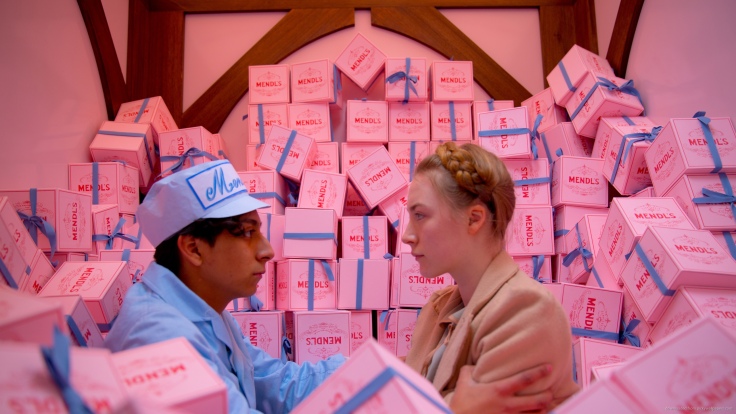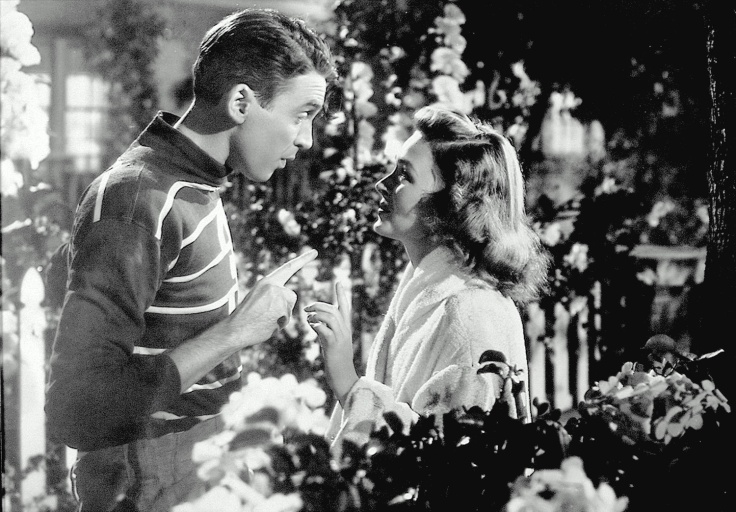10. Jemaine Clement and Loren Horlsey as Jarrod and Lily in Eagle Vs. Shark (2007): Jarrod and Lily both transform each other. Jarrod’s narcissism makes Lily tough, Lily’s sweetness gives Jarrod humanity. For a while, it seems all is lost. But Jarrod comes to his senses, and realises that without Lily, he is nothing but a mean, arrogant loser. Lily is his better half, and though it is almost too late, he manages to win her back. Both accept that the other is a loser. But Lily works a little harder and makes Jarrod a kind loser.
Most Romantic Moment: They are few and far between. The film is primarily a cringe comedy that aims to leave you squirming. But I do love the scene of Jarrod and Lily’s reunion, Jarrod presenting Lily with a leggy bunch of – what else – lilies, and agrees to play Lily’s favourite game for long journeys – pointing at any horse you see and announcing it. “Damn,” says Lily, as Jarrod spots the first horse, and the two sit together at the back of the bus back to Wellington.

9. Jared Gilman and Kara Hyward as Sam Shakusky and Suzy Bishop in Moonrise Kingdom (2012): Young love – purely expressed – is a joy to behold. Sam and Suzy do love each other, and Anderson does not treat their love and trust in each other as impossible simply because of their age. They respect each others interests, privacy, and personal boundaries, and are shown to continually clarify the others consent in a mature fashion. Charming and evocative of the earnest approach to true love which is often adopted in childhood.
Most Romantic Moment: The obvious choice is their dance on the shores of Moonrise Kingdom, but I’ll plump for the moment where Suzy’s face appears at the opening the chimney which Sam is looking up. She adopts an angelic quality from the halo of light circling her head and we realise that Sam will do anything for her.

8. James Stewart and Katharine Hepburn as Macaulay Connor and Tracy Lord in The Philadelphia Story (1940): Mike and Tracy seemed meant to be. The chemistry between Stewart and Hepburn sizzled, and the two flitted around each other like resplendent birds for the course of the film, a flirtation culminating in a sozzled late night dip in the pool. The two battled wits to spectacular effect, and their chemistry was natural and spontaneous. But alas, it all built to nothing – Tracy was won by Dexter.
Most Romantic Moment: The moment where the two relax on the porch following a raucous party. An initially jesting – and very flirty – chat quickly escalates into a discussion of class, humanity, and empathy. Passions rise and the magnetic pull between the two reaches a level which can only be called ludicrous. The scene escalates and escalates before culminating in a sudden kiss. The whole affair is made all the more striking by dazzling use of close-ups, which are used only sparingly throughout the whole film.

7. Luke Wilson and Gwyneth Paltrow as Richie and Margot Tenenbaums in The Royal Tenenbaums (2001): It’s a testament to the talent of both actors that this relationship does not seem weird or grotesque in any way. Paltrow and Wilson sensitively portray two people who are deeply in love but cannot show it, bound up as they are in societal constructs of what is good and decent. They remain stony on the exterior, but squint and you can see the cracks. Watch Paltrow’s Margot desperately pleading Dudley to tell her where Richie is after his suicide attempt and observe Wilson’s Richie aggressively smashing a glass pane with his fist after Bill Murray’s Raleigh St. Clair airs suspicions of Margot cheating on him.
Most Romantic Moment: Following Richie’s suicide attempt, he returns home to find Margot sitting in the little yellow tent they often played in during childhood. Soundtracked to woozy Rolling Stones hits, the two confess their love for each other, and Margot utters the immortal line: “I think we’re just gonna to have to be secretly in love with each other and leave it at that.”

6. Jean Dujardin and Berenice Bejo as George Valentin and Peppy Miller in The Artist: George and Peppy have each others backs. When it seems all is lost for George, suddenly, here comes Peppy, fuelled with compassion and a deep affection. She pulls him back from the brink and he pushes her into the stardom he knows she deserves. It’s a bittersweet romance, to use a phrase perhaps deployed too freely. There’s a moment roughly in the middle of the film where George hears Peppy deriding the “old” silent era and its aged movie stars. You can see George’s heart sink as he hears the woman who he found himself drawn to so brusquely disregarding everything George worked for, everything which was destroyed by the arrival of the talkie, and by extension, the arrival of Peppy. Interestingly, George does not resent Peppy. He is perfectly kind and cordial. He does not hate her, he hates those behind the arrival of this new technology. And, you sense, he hates himself. Hates his playboy manner, hates his stubbornness, hates his lack of creativity. It is only through Peppy that he is able to appreciate his good qualities, and it is only through George that Peppy remains grounded.
Most Romantic Moment: George and Peppy’s final dance. It is perfectly synced, immaculately performed and imbued with real emotion. This is the two where they are meant to be, lighting up the screen together – as equals. Neither one better than the other. It is a dance of perfect equilibrium and affection.

5. Audrey Tautou and Mathieu Kassovitz as Amélie Poulain and Nino Quincampoix in Le Fabuleux Destin d’Amélie Poulain (2001): This relationship didn’t receive as much testing as the others in the list, and it might be easier to play for Tautou and Kassovitz as a result. But the finished product is sweet and affecting, with meeting of the two odd souls a reward worth the time the viewer spends watching their endless quest to end up in each others arms. The aforementioned quest results in some spectacularly realised sequences, including – but not limited to – a ghost ride which takes an oddly erotic turn; an encounter in Les Deux Moulins which causes Amélie to literally melt into a puddle on the floor; and a chance meeting which causes Amélie’s heart to visibly slam against her sternum. The grand finale teeters on a knife’s edge, and there is genuine worry on the viewers behalf that Amélie will leave it just too late, that she will wait just too long as to lose Nino forever. Unsurprisingly, she doesn’t and the pair are finally united.
Most Romantic Moment: The final meeting in Amélie’s flat. It’s sweet, underplayed, and displays a refreshing lack of gratuity. Add in the genuine suspense as the viewer begs Amélie to swallow her fear and open the door, and you’ve got one hell of a scene. The close-up on both their faces at once only heightens the crackling chemistry between the two, and the viewer is immensely satisfied when, at last, the door opens and Nino is invited in.

4. Tony Revelori and Saoirse Ronan as Zero Moustafa and Agatha Mendl in The Grand Budapest Hotel (2014): The marriage of Zero and Agatha is a mere subplot in the film, but it’s still powerfully affecting. It’s clear the two are soul mates. They fall head over heels and marry after their “third formal rendezvous” to the cinema. The shot of Agatha encircled by swirling lights – as Zero sees her – is swooningly romantic, but since the relationship is given so little time, I cannot place it higher. Ronan, Revelori and Anderson delicately suggest a mutual respect and admiration. For example, Zero lovingly inscribes a book of romantic poetry “For my dearest, darling, treasured, cherished Agatha whom I worship. With respect, adoration, admiration, kisses, gratitude, best wishes and love from Z to A.” The whole beautiful affair is all the more poignant when a shattered older Zero reveals that he lost his beloved only two years after the events detailed in the film. It’s one of Anderson’s most heart-rending moments, as the love between them was clearly so pure and potent.
Most Romantic Moment: When the two take to the carousel, and the aforementioned halo of lights encircle Agatha’s face. The soft focus gives her an ethereal quality. She seems untouchable, radiant, angelic, and since the shot is from Zero’s point of view, we quickly realise that this is how he thinks of his darling Agatha all the time. Touching, to say the least.

3. James Stewart and Margaret Sullavan as Alfred Kralik and Klara Novak in The Shop Around the Corner (1940): James Stewart and Margaret Sullavan were “red-hot” on-screen together. It makes sense that Stewart was, by all accounts, besotted with Sullavan. Their initially hostile relationship belies a vulnerability, and the real possibility that they may never realise their affections is enough to give the viewer palpitations. They are perfect together. Although Sullavan’s Clara furiously denies any feelings for Kralik, she clearly – and touchingly – holds his opinion in high regard. Perhaps before the viewer has even figured out that Kralik’s “extraordinary” female pen-pal is in fact Klara, there comes a critical scene which will most likely only be caught on a second viewing. Kralik berates Klara’s choice of blouse, and though she responds with biting disdain (a sniping comment about Kralik’s neckties) she later asks a female colleague what she thought of the said blouse. On a first viewing, the viewer suspects she is simply trying to gain a sense of triumph by confirming that Kralik is only in the minority when it comes to his opinion on her blouse. On the second viewing, it finally sinks in the Klara really does care what Kralik thinks. She is worried by Kralik’s disdainful remarks and she needs confirmation that she looks good. In a similar fashion, Kralik slopes off to his colleague Pirovitch and quickly asks whether there’s “anything wrong” with his neckties. No matter how repelled each seems by the others, the inklings of attraction are not too far beneath every shared scene. Lubitsch strings this pseudo-flirting out to impossible lengths, and by the rewarding climax, the viewer cannot bear for the pair to go on as they are for any longer. It feels like Amélie‘s central relationship, but a little bitter, and a little more grown-up.
Most Romantic Moment: The painfully drawn out final scene where Stewart’s Kralik demonstrates a masterclass in letting someone down gently, only to realise that he is, in fact, not letting Klara down at all. It’s splendid. Romantic, eloquent, and mature. There is no frenzied kissing after Klara realises that the man she has been dreaming about is stood right in front of her. In evocative close-up, Sullavan simply looks up – face etched with disbelief – and murmurs one word. “You?” She isn’t shocked that Kralik was able to write so beautifully. She doesn’t think he’s lying to her. She simply cannot believe that the man she loves, the same man she has been decimating with her words, would ever be willing to love her back. It’s tenderly scripted, shot, and played. A classic scene if ever there was one.

2. Harrison Ford and Carrie Fisher as Han Solo and Princess Leia in the Star Wars Series (1977-2016): A romance for the ages. The romance between Han and Leia was a rare one, in that the pair did not suddenly treat each other with saccharine sweetness, even after their love was realised. It was also unusual in the sense that Leia was not ‘completed’ by Han. She was a complete and whole and fully formed person before Han entered her life. She didn’t lose her stubborn ways or her sarcastic sense of humour. Her relationship with Han didn’t soften her edges, didn’t grind her down into a soft princess who was more palatable for audiences. She retained her hard edges, all the contours and ridges which made Han fall for her in the first place. In fact, until the famous “I know,” the two didn’t really feel any need to express their love in any visible way. They were confident that the other was aware of their love, and neither let it compromise their prerogatives. Sure, they cared deeply for each other, but they didn’t let it compromise what they were trying to achieve. Until, of course, Return of the Jedi. Return of the Jedi is the Star Wars equivalent of a romance movie. Leia and Han continually compromise their own safety to save the other. Their love is of a selfless and true nature. They mock each other, make sarcastic comments and display disapproval of whatever their partner proposes. They can do this because theirs is a meeting of minds. The two are remarkably similar, and as such, they can continue to be rude and hostile and unpleasant without compromising the tenderness at the heart of their love. They are two mature adults who are fighting a war, looking for their friend (and Leia’s brother, though she doesn’t know it), and yes, they just happen to be in love.
Most Romantic Moment: I would head straight for the reunion in The Force Awakens. Leia is undeniably happy to see Han, but she does not let him get away with his abandonment of her. She berates him for his frankly unacceptable conduct, and yet we can still see the love beneath, just as before. Their embrace later in the film is poignant. Neither is crying for the other. They know their partner is strong beyond belief. Instead, they cry for their son, who they know is not as strong as them. The two are united even in grief. A wonderfully structured and undeniably iconic pairing.

1. James Stewart and Donna Reed as George and Mary Bailey in It’s A Wonderful Life (1946): So here we have it. My favourite romance of all time: George and Mary. George and Mary’s marriage is primarily one thing. Sweet. When a relationship is comforting, makes an audience’s hearts swell with affection, it will often be derided as clichéd, vanilla, flatly uninteresting. I would argue that there is no higher accolade for an on-screen relationship than sweetness. Watching romance on the screen, your heart is perhaps supposed to melt a little. You should feel warm and fuzzy – because surely that’s the aim. To be able to insert yourself into a world where true love is the number one priority, to feel comforted by the sense of loyalty and devotion displayed on-screen. George and Mary’s relationship is simply beautiful. There is never any doubt that they love one another with all their heart. It is intense and pure and, yes, sweet. You can watch George and Mary dancing the Charleston, or lassoing the moon, or kissing outside the church where they just married, and you can feel utterly at peace. It is a relationship that – at least in my view – makes the heart swell and the mind soften and the inhibitions collapse. I have never felt as relaxed and joyous and open as I have when watching It’s A Wonderful Life. Yes, The Grand Budapest Hotel is my favourite film, but it carries an undeniable seam of melancholy under its beautifully realised exterior. It’s A Wonderful Life is distinct “Capra-Corn.” A character is tested, almost to his limit, and because he is so good and so kind, the audience feels terribly sad for him. But inevitably, everything turns out fine because the people who love him band together and pull him back from the brink. This may sounds like a critique. Trust me, it is not. A Frank Capra film is the purest and truest expression of what makes people good, and this is never more evident than in the love of George and Mary. George and Mary are good people, and it radiates from within them. They simply glow when on-screen together, each quite at ease and so deeply in love. Their goodness and kindness and affection lights them up from the inside, and they are drawn to each other like moths to a flame. To watch George and Mary is to feel at peace with all around you. It is, I feel, a constant reminder of the goodness and purity of humanity. To watch Mary saving her husband’s tormented soul is to be given hope. To watch George giving Mary faith in the goodness of a man is to be renewed. To watch the whole beautiful film is to feel truly, deeply human. The love of George and Mary is such a perfect and beautiful distillation of all that it means to love. It takes all that warmth, all that feeling, all that beauty, and encapsulates it into a microscopic representation of the innate goodness of our world. No superlatives can give justice to the purity of George and Mary.
Most Romantic Moment: I cannot narrow it down. George’s promise to lasso the moon is the most theatrical profession of his adoration, but smaller scenes – such as the way George and Mary find themselves irrevocably drawn to each other whilst sharing the earpiece of a phone – speak similar volumes with fewer grand gestures. I nominate the whole film. Something as brilliant as the relationship between George and Mary cannot be hacked apart into little pieces which are labelled as superior or inferior. You must simply take the beautiful whole of all these little fragments.



Leave a comment